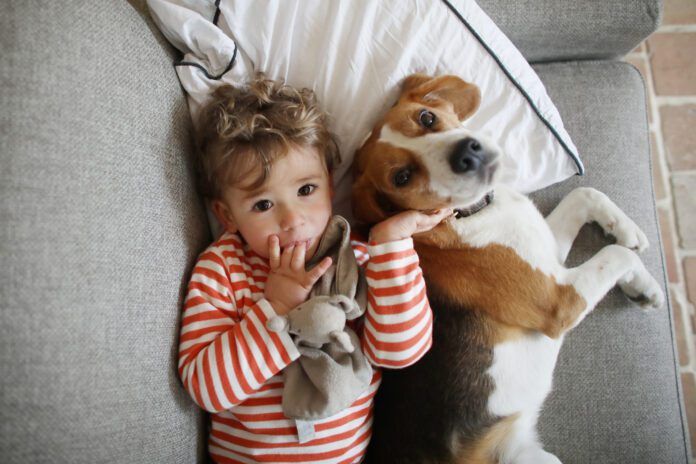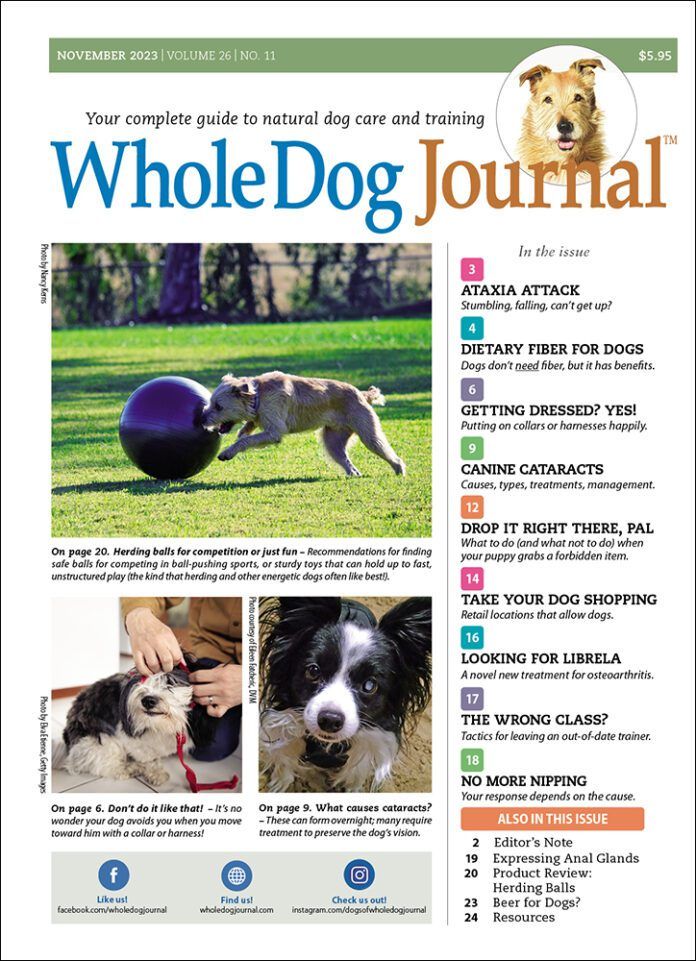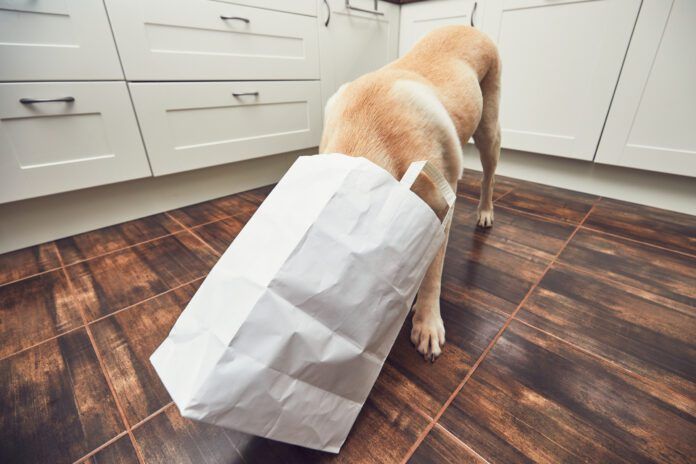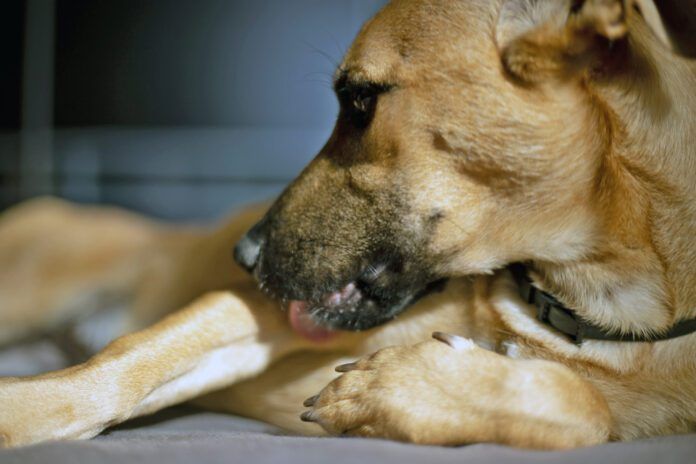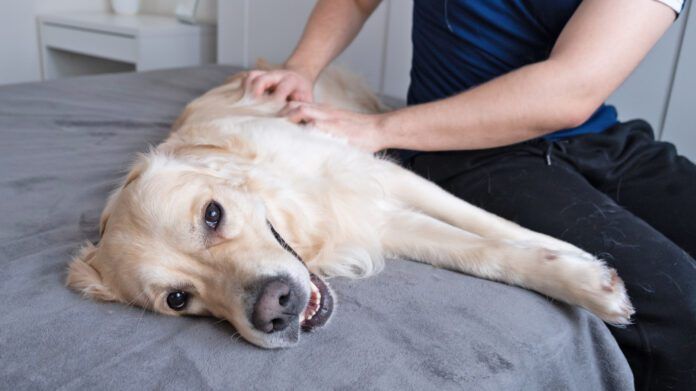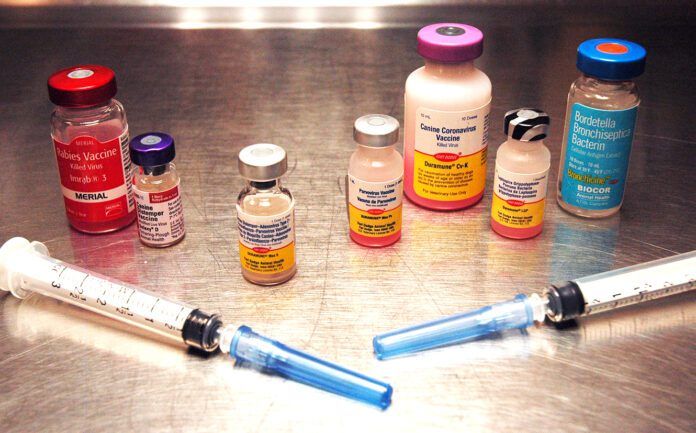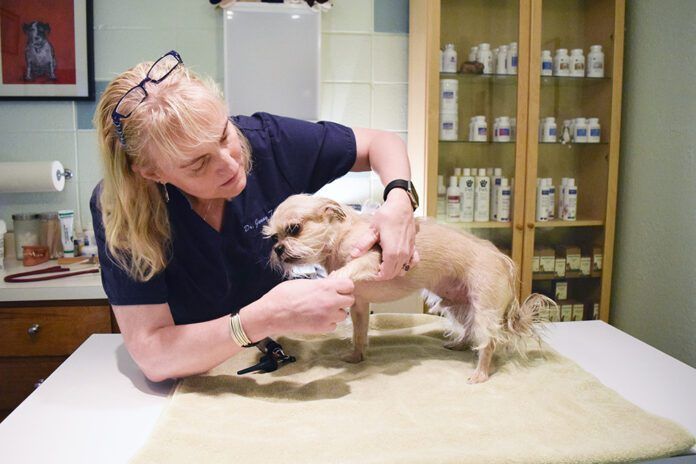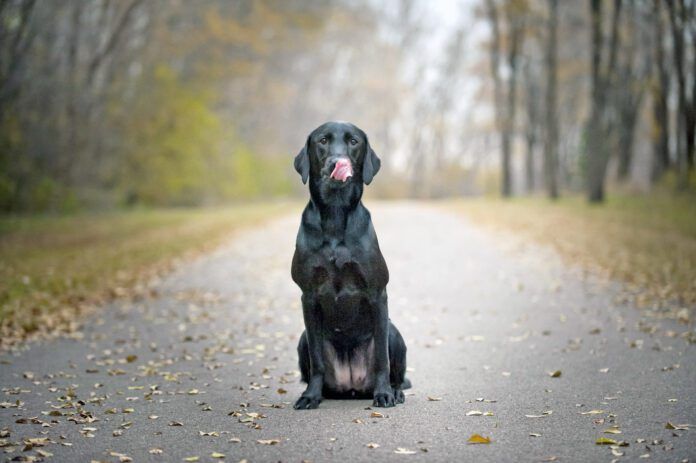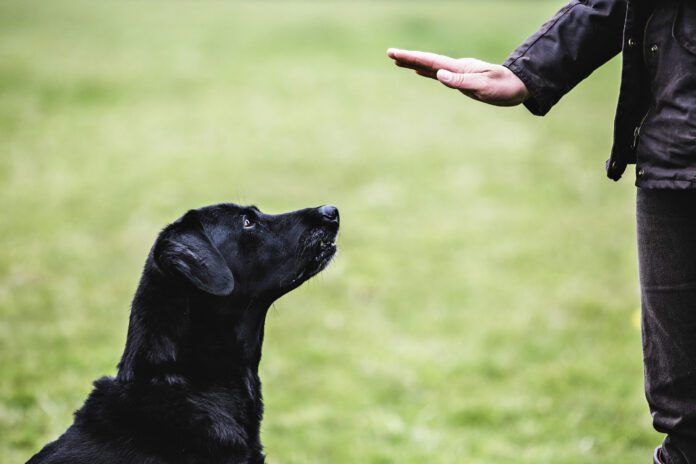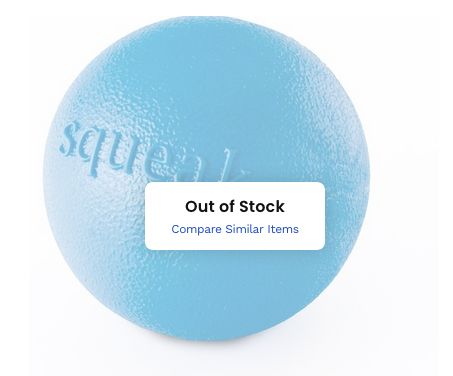As a veterinarian living in snowy upstate New York, during the winter months, I see an uptick in the number of dogs brought to my clinic because they were peeing blood. This isn’t because dog suffer more from hematuria (blood in the urine) in the winter; it’s because the snow on the ground makes it easy to spot the color of the dog’s urine! And when that normally yellow spot is red instead, it can be quite alarming to the dog’s owner.
There are several conditions that can cause blood in your dog’s urine. Let’s look at the different causes and how each one is diagnosed and treated.
Bacterial Infection
Dog bacterial infections, specifically, bladder infections (also known as urinary tract infections or UTIs) and kidney infections (also known as pyelonephritis) can cause bloody urine. Of the two types of infection, bladder infections are far more common, especially in female dogs.
Female dogs are more likely than male dogs to develop bladder infections at some point in their lifetime due to their anatomy. Female dogs have a much shorter urethra than male dogs, meaning that bacteria have less distance to travel from the outside world to the bladder.
The most common bacteria implicated in bladder infections is Escherichia coli (E. coli), a normal part of the bacteria flora in the colon that is present in a dog’s stool. In female dogs, where the poop comes out is just north of where the pee comes out. This makes it easy for bacteria to cross the bridge between the anus and the vulva and travel upstream through the urethra to the bladder.
Other common bacteria that cause bladder infections are part of the normal skin flora. Female dogs who have a hooded vulva or who have less than ideal hygiene of the coat and skin around their vulva are more likely to develop bladder infections. A hooded vulva is where the vulva is partially covered by an extra fold of skin.
Kidney infections can develop from one of two routes. Bladder infections, if left untreated, can develop into kidney infections. This occurs because bacteria in the bladder can travel up to the kidneys through the ureters, the tubes that carry urine from the kidneys to the bladder.
The second method by which a kidney infection can develop is from an infection elsewhere in the body outside the urinary system. This is called a systemic infection – where bacteria travel through the bloodstream to the kidneys and take up residence there.
Dogs with bladder infections may strain to urinate or may urinate more frequently. They may also have urinary accidents in the house. They continue to eat and drink normally and typically have a normal energy level. Dogs with kidney infections tend to be much sicker. They are lethargic, eat less or not at all, may drink more water than usual, and may also vomit or have a fever.
If your veterinarian suspects that your dog may have a bladder or kidney infection, she may order a urinalysis to look for bacteria in the urine, and blood tests to examine your dog’s kidney values and white blood cell count. If bacteria are found in your dog’s urine, then a sample of your dog’s urine should be submitted to the laboratory for urine culture and sensitivity. This identifies the type of bacteria causing your dog’s infection and determines which antibiotic is appropriate. A urine culture and sensitivity takes about three to five days to complete, so your dog will be started on a broad-spectrum antibiotic pending the results of this test.
Uncomplicated bladder infections are typically treated on an outpatient basis with an oral antibiotic and pain medication. Kidney infections typically require hospitalization with intravenous fluids and antibiotics until your dog is eating and no longer vomiting.
Stones and crystals
Bladder stones and crystals in the urine can cause bloody urine. Crystals are microscopic structures with sharp edges. When thousands of crystals join together, they create a bladder stone. Some bladder stones are smooth and others have a hard, spiked surface.
Crystals and stones in the urine circulate in the bladder like a snow globe, causing microtrauma to the lining of the bladder. This causes the lining of the bladder to bleed, resulting in bloody urine.
Dogs with bladder stones or urinary crystals will act much like dogs who have a bladder infection. In fact, many dogs with bladder stones or urinary crystals will have a concurrent bladder infection.
The presence of urinary crystals can be detected on routine urinalysis. Treatment for urinary crystals will depend on the type of crystals present. If your dog has crystals in his urine, your veterinarian may recommend imaging to look for stones in your dog’s bladder and urethra.
Some dogs will have bladder stones but may not have crystals detected on their urinalysis. This is because the production of urinary crystals can be transient, not constant. If other causes of bloody urine have been eliminated, then your veterinarian will recommend imaging to look for bladder stones.
Some types of bladder stones are radio-opaque (can be seen on routine x-rays) and others are radio-lucent (are not easily seen, if at all, on routine x-rays). Struvite, calcium oxalate, and xanthine stones are radio-opaque. Cystine and urate stones are radio-lucent. Veterinarians remember which stones cannot be seen on routine x-rays with the mnemonic “I can’t C U!”
If your veterinarian is highly suspicious that your dog has bladder stones but cannot find any on routine x-rays, then she may recommend either an abdominal ultrasound or a cystogram. With abdominal ultrasound, the ultrasound waves wrap around bladder stones, creating a unique shadow on the image of your dog’s bladder.
A cystogram is a series of contrast x-rays of the bladder. The bladder is first emptied of urine and then filled with gas (usually room air or carbon dioxide), then contrast dye, then emptied and filled with air again. An x-ray of the bladder is completed after each step. This allows any bladder polyps, tumors, congenital abnormalities, or radio-lucent stones to be seen that would otherwise not be seen on conventional x-rays.
Struvite stones can often be dissolved by feeding a prescription urinary diet, such as Hills c/d or Royal Canin Urinary SO. Dissolving struvite stones can take weeks to months of feeding exclusively the prescription diet. Meanwhile, your dog will continue to experience pain, bloody urine, and will be at increased risk of developing a urethral obstruction. A urethral obstruction is when a stone becomes lodged in the urethra and your dog can no longer urinate.
Other types of stones typically require surgical removal through a procedure called a cystotomy. There are non-surgical and minimally invasive surgical techniques for removing bladder stones. However, other than voided urohydropulsion, these methods require specialized training and equipment and are only available at a limited number of hospitals throughout the country. Voided hydropulsion can be completed by a general practitioner that has been trained in the technique but is limited to removing very small stones and is often limited to female dogs.
After bladder stones are removed, your veterinarian will submit the stones to the University of Minnesota Urolith Center for stone analysis. Once the stone analysis is complete, recommendations will be made regarding your dog’s diet and potentially medications to minimize the risk of developing bladder stones in the future.
Polyps, pockets, and tumors
Bladder polyps are typically benign growths that originate from the lining of the bladder. These polyps bleed readily and can cause bloody urine. Bladder polyps are diagnosed by ultrasound or cystogram; they are not readily seen on routine x-rays.The treatment for bladder polyps is surgical removal.
A pocket or pouch in the bladder – such as a vesicourachal diverticulum – is usually a congenital malformation that has been present since birth. Sometimes a bladder diverticulum can be acquired later in life. Urine collects and is retained in this outpocketing, leading to urinary incontinence and recurrent UTIs. Chronic UTIs can cause cystitis, or a thickened and inflamed bladder. Both UTIs and cystitis can cause bloody urine.
The treatment for a malformation of the bladder is surgical correction of the defect. A sample of the removed pouch is submitted for a urine culture and sensitivity to determine the correct antibiotic for the dog. Dogs receive an antibiotic for about four weeks post-surgery.
Tumors of the bladder and urethra can be either malignant or benign. The most common malignant tumor of the bladder and urethra is transitional cell carcinoma (TCC). Benign bladder and urethral tumors are much less common in dogs. Tumors of the urinary system are typically diagnosed by ultrasound.
The treatment for bladder and urethral tumors is surgical resection. Some tumors cannot be surgically resected because of their location or size. Medical treatment with a medication called piroxicam may improve a dog’s quality of life if the tumor cannot be removed.
Prostate disorders
Disorders of the prostate can cause bloody urine in both neutered and intact male dogs. Male dogs with prostate disorders are more likely to strain when defecating than urinating. They may also have thin, ribbon-like stools. Prostate disorders cause enlargement of the prostate. Unlike in human males, a dog’s prostate tends to grow outward, not inward, putting more pressure on the colon and rectum than the urethra. This is why dogs with an enlarged prostate have more difficulty pooping than peeing.
Prostate disorders that affect primarily intact male dogs include benign prostatic hyperplasia (BPH), prostatic abscess and prostatitis (prostate infection), and prostatic cysts. Treatment for these disorders include both medical and surgical management. Neutering these dogs helps involute, or shrink, the prostate.
Prostate cancer can affect both intact and neutered male dogs. The most common form of prostate cancer in the intact male dog is adenocarcinoma. Neutered male dogs see an increased prevalence of transitional cell carcinoma (TCC), the same type of cancer that can affect the bladder. Unfortunately, prostate cancer in the dog is usually advanced by the time it is detected, making the prognosis for this condition poor.
Other causes for blood in the urine
Other causes for bloody urine include pelvic fractures or blunt-force trauma to the abdomen, coagulation disorders, and the recent administration of cyclophosphamide (a chemotherapy drug for treatment of lymphoma). Kidney disease, diabetes mellitus, and hyperadrenocorticism (Cushing’s disease) can also increase the risk of developing cystitis and therefore bloody urine.
With proper diagnostics and treatment, the cause of your dog peeing blood can be found and, in most cases, treated. If your dog’s urine looks pink or red, have him or evaluated by your veterinarian as soon as possible.


